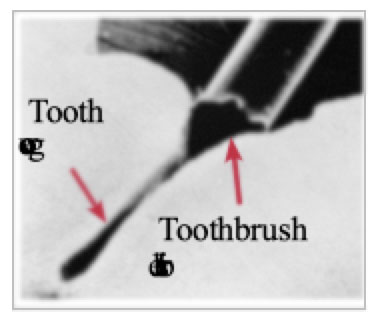- Removable Partial Dentures
- Tooth Extraction: Post-Operative Instructions
- Your Wisdom Teeth
- Taking Care of Your Teeth and Gums
- Basic Flossing
- Do You Have a Cracked Tooth?
- Periodontal Disease: Your Complete Guide
- Basic Brushing
- Periodontal Disease: Keep Your Gums Healthy
- Fluoride: Nature's Cavity Fighter
- Hate To Floss? 3 Other Ways to Clean Between Your Teeth
- Handling Your Child's Dental Emergency
- Get the Facts about Mouth and Throat Cancer
- Oral Health and the HPV Vaccine
- Do You Grind Your Teeth?
- Tooth Decay in Baby Teeth
- Do You Have Sleep Apnea?
- Your Single Tooth Implant
- Your Child's Teeth
- Tobacco and Oral Health
- Seal Out Decay
- Temporomandibular Disorders (TMD)
- Healthy Smiles for Mother and Baby
- Healthy Mouth, Healthy Body: Making the Connection
- Baby Teeth: When They Come In, When They Fall Out
- Thumb Sucking, Finger Sucking and Pacifier Use
- Sip and Snack All Day? Risk Decay!
- 3 Tooth Replacement Options
- Tooth Erosion
- Tooth Decay
- Treating Cavities
- Should You Take Antibiotics before Your Dental Treatment?
- Mouthguards and Sports Safety
- Gum Recession Causes and Treatments
- Dental X-Ray Exams
- Diabetes and Your Oral Health
- Scaling and Root Planing
- Pregnancy and Oral Health
- Your Dentures
- Your Child's First Visit to the Dentist
- Root Canal Therapy Can Save Your Tooth
- Periodontal Disease - Don't wait until it hurts
- Why Do I Need a Bridge?
- Why Do I Need a Crown?
- Your Smile - An Owner's Manual
- Dental Sealants Protecting teeth, preventing decay
- Happiness is a Healthy Smile
- Dental Veneers - Improve Your Smile
- Tooth Whitening for a Brighter Smile
- Why Baby Teeth Are Important
- Dry Mouth
- Sealant Quick Reference
- Caries en Dientes de Leche
- Why Doesn't My Insurance Pay for This?
- Periodontal Maintenance: Stay on Top of Gum Disease
- Flossing Quick Reference
- Brushing Quick Reference
- Your Child's Teeth: Ages 6–12
- Your Child's Teeth: From Birth to Age 6
- Dental Implants: Are they an option for you
- Mouth Sores and Spots
- Sipping, Snacking and Decay
- Improving Your Smile
- Your Child's First Dental Visit
A dental sealant is a thin covering that is applied onto the chewing surfaces of the back teeth. It acts as a barrier to “seal out” plaque and food. Sealants are a safe, painless, and easy way to help protect your teeth and keep them healthy.
Sealants on permanent molars reduce the risk of cavities by 80%.
Sealants Help Prevent Tooth Decay and Cavities
Your teeth are coated with a sticky film of bacteria called plaque (pronounced PLACK). Bacteria in plaque turn sugar from what you eat and drink into acids. These acids can break down the hard, outer layer of your teeth, called enamel (e-NAM-uhl). Over time, the acid can weaken your enamel and may cause tooth decay, or form a hole (cavity) in your tooth’s enamel.
Tooth decay often begins on the chewing surfaces of the back teeth. These surfaces have pits and grooves that trap plaque and bits of food. Toothbrush bristles may not always reach into the pits and grooves, and that makes it hard to keep them clean. The sealant material flows into the pits and grooves on those surfaces to stop bacteria and bits of food from getting trapped.
Even a toothbrush bristle is too big to reach inside a groove in the tooth (magnified).

Sealants Are Easy to Apply
It takes only a few minutes for your dentist to seal each back tooth.
- Your tooth is cleaned and the chewing surfaces are prepared to help the sealant materials stick to your tooth.
- Then, the sealant is applied onto the chewing surface where it bonds to your tooth and hardens.
- A special light may be used to help the sealant harden.
- Sealants are usually clear or white and can’t be seen when you smile or talk.
Sealants Can Last for Several Years
Sealants can last several years before they need to be replaced. Over time, sealants can come off, which means they will not protect the teeth as well. Chewing on ice or hard foods can also break down sealants. During regular dental visits, your dentist will check the sealants and reapply them if needed.
Sealants are most often placed in children and teenagers. But, you never outgrow the risk of tooth decay and cavities, so adults can benefit from sealants, too.
Prevention is Always Better Than Treatment!
Sealants are very useful in reducing the risk of tooth decay on the back teeth and may help save you money over time.
Visit Our Office
Office Hours
- MON8:30 am - 5:00 pm
- TUE8:30 am - 5:00 pm
- WEDClosed
- THUClosed
- FRI8:30 am - 5:00 pm
- SAT9:00 am - 2:00 pm
- SUNClosed